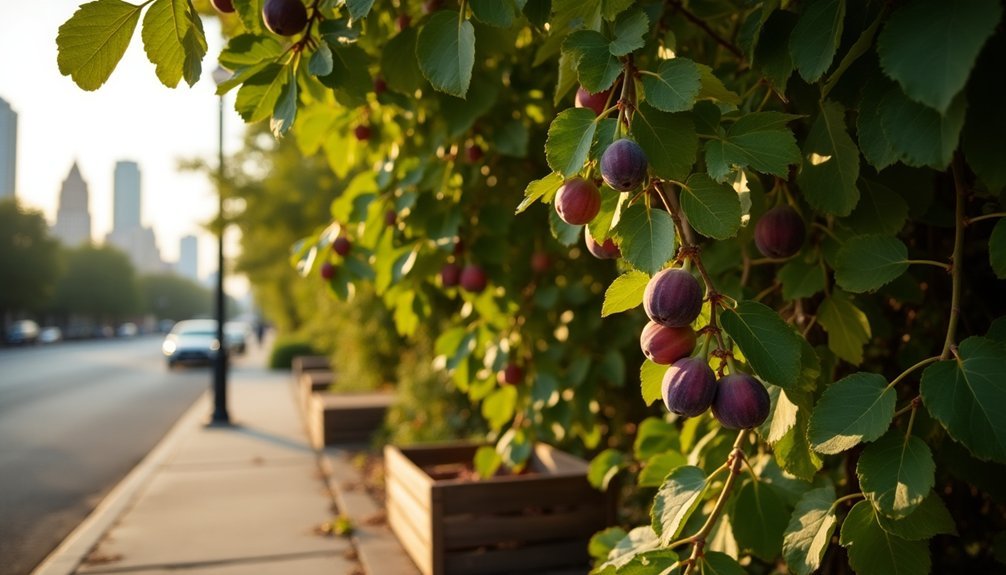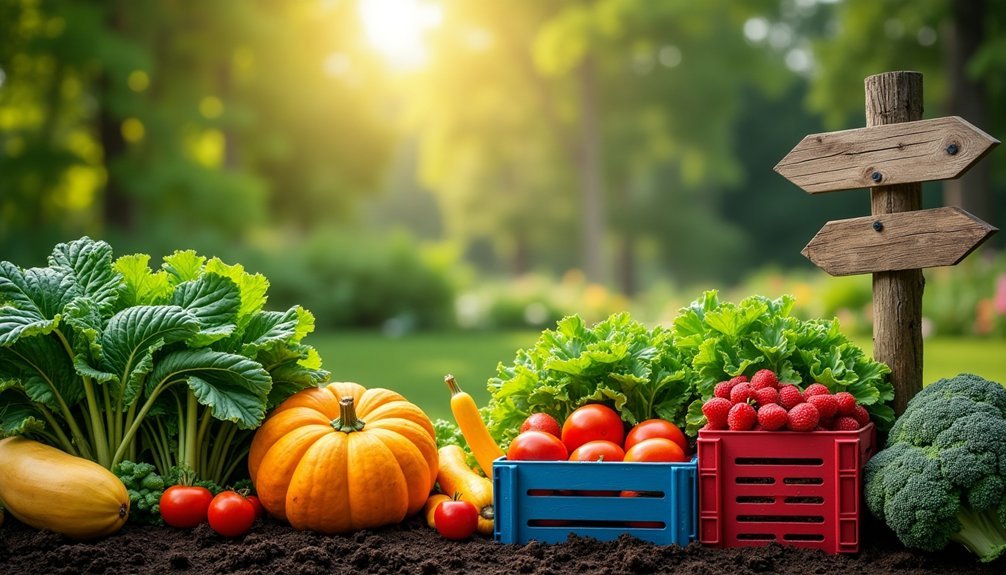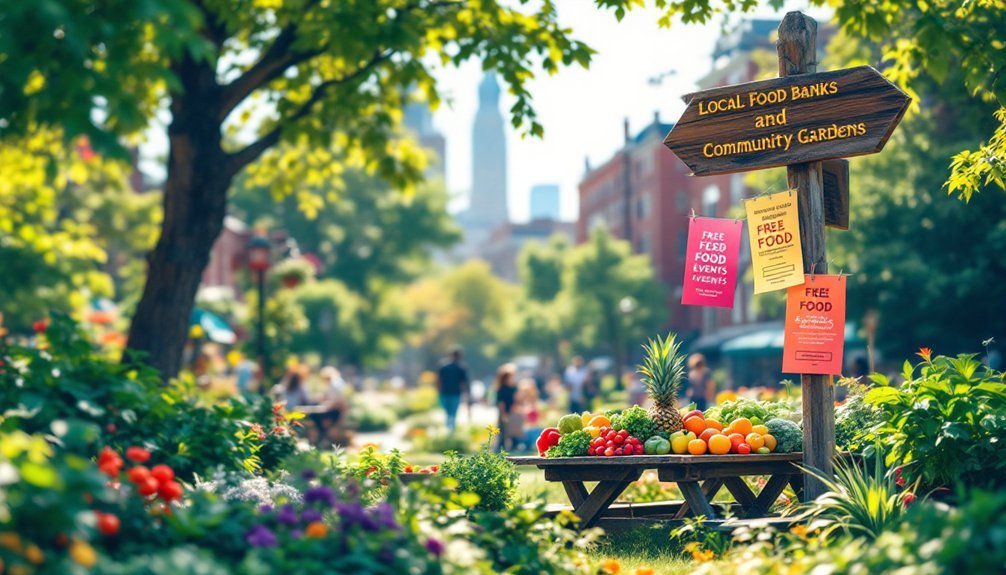To find free city food year-round: 1) Harvest from urban fruit trees using proper timing cues—brown seeds for apples, slight softness for plums. 2) Forage wild edibles that change with seasons—winter offers pine needles and burdock roots, while summer provides berries and mints. 3) Connect with community resources like food banks and seasonal festivals that adjust their offerings throughout the year. These three approaches guarantee you'll never miss nature's free bounty waiting just around the corner.
Urban Fruit Trees: When and Where to Harvest

While many city dwellers overlook them, urban fruit trees offer an abundant—and free—food source throughout the year. You'll find these treasures in parks, along sidewalks, and in community spaces, not just private yards.
Look for apples when their seeds turn brown and they detach easily from branches. Plums should feel slightly soft, while cherries need to be firm yet juicy. For peaches, wait until they're about 75% yellow, and harvest apricots when fully yellow but still firm. Figs are ready when soft and properly colored. Not all fruit will ripen at the same time, so you may need to make multiple visits to fully utilize urban fruit trees.
Each fruit has its perfect moment—apples with brown seeds, slightly soft plums, firm cherries, yellow-tinted peaches, and properly ripened figs.
When harvesting, use a gentle twisting motion and proper tools like fruit pickers to avoid damaging trees.
Remember that many trees go unharvested, so initiatives like "not far from the tree" welcome community participation in collecting and sharing this urban bounty.
Wild Edibles Calendar: Month-by-Month Foraging Guide
Throughout the changing seasons, urban foragers can discover an impressive variety of wild edibles no matter what month appears on the calendar.
Winter offers pine needles, burdock roots and coastal treasures like seaweeds and shellfish. As February ends, you'll find maple and birch sap becoming available.
Spring brings watercress, wild asparagus, and violet blooms, while summer explodes with berries, wild mints, and nutritious purslane.
By late summer, you can harvest blackberries, elderberries, and beach pea pods.
Fall rewards patient foragers with rose hips, nuts (hickory, black walnut, chestnut), and persimmons. Fall is also prime time to search for delicious hen of the woods and other nutritious wild mushrooms.
Even in November, you'll find wild horseradish roots and multiflora rose hips persisting.
With this calendar as your guide, you're never more than a walk away from fresh, free food.
Community Food Resources That Change With Seasons

Because access to free food extends beyond wild foraging, community resources offer additional seasonal options worth exploring.
You'll find that food banks adjust their offerings based on what's currently abundant, with programs like North State Food Bank providing fresh produce from May through October via drive-through distributions.
To maximize your access to seasonal community resources:
- Look for Farm-to-Kids programs during the school year if you have children from low-income households who could benefit from fresh produce.
- Attend seasonal festivals and community events, which often feature free food while raising awareness about food security.
- Plan around winter donation surges when food banks typically have more variety due to holiday giving and charitable sentiments.
Remember that the North State Food Bank serves approximately 5,000 residents monthly across five counties, ensuring food accessibility for many families throughout the year.
Frequently Asked Questions
Are There Legal Concerns With Harvesting From Public Trees?
Yes, you'll face legal concerns when harvesting from public trees. Local regulations often prohibit this activity without permits. You're risking fines and criminal charges if you harvest without proper authorization from regulatory bodies.
How Do I Identify Poisonous Look-Alikes When Foraging?
Study distinctive features like leaf patterns, stem structure, and fruit characteristics. Always cross-reference with multiple field guides. You'll need to learn specific differences between edible plants and their toxic lookalikes before consuming anything you've foraged.
Can I Exchange Skills for Food in Community Gardens?
Yes, you can exchange gardening help, teaching workshops, or administrative skills for produce at community gardens. Many gardens welcome skill-trading arrangements, especially if you offer expertise in composting, carpentry, or garden maintenance.
What Safety Precautions Should I Take With Community Fridges?
Wash your hands before using community fridges, wear a mask, and only take properly labeled food with intact packaging. Check expiration dates carefully and don't consume anything that looks suspicious or spoiled.
How Do I Start My Own Food Sharing Initiative?
To start your own food sharing initiative, gather interested neighbors, establish clear guidelines, designate a coordinator, create communication channels, and set up collection points. Don't forget to address safety and sanitation practices from the beginning.
In Summary
You've now got the tools to feed yourself for free in the city all year long. By mapping fruit trees, learning the seasonal foraging calendar, and tapping into community resources, you'll never go hungry. Remember to harvest respectfully, verify what's safe to eat, and share your bounty. Nature's grocery store is open 365 days a year—you just need to know where to look.





Leave a Reply